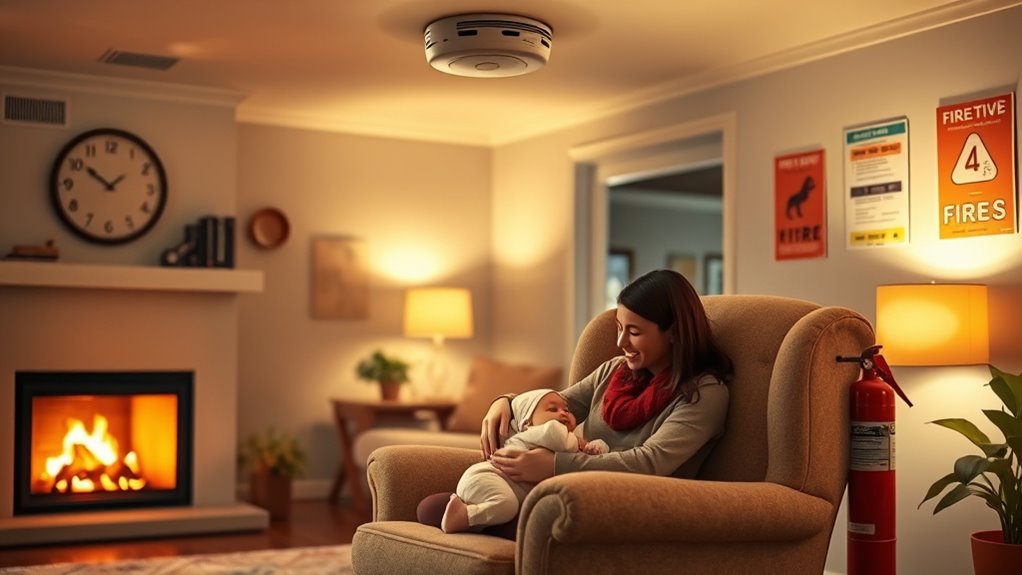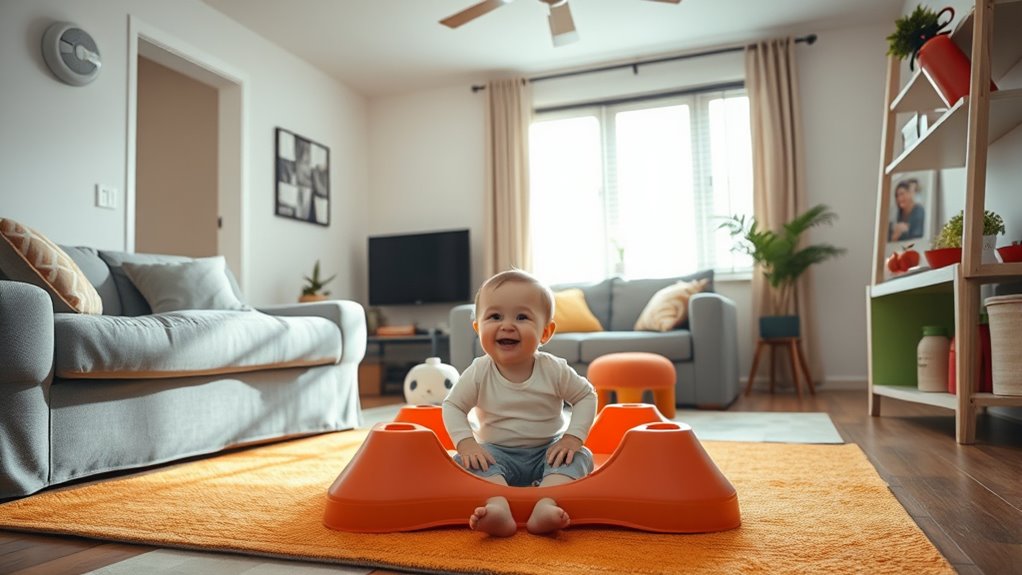To protect your family with a baby at home, install smoke alarms on every level and test them monthly. Develop a clear escape plan with two exits per room, practicing it regularly, including crawling with your baby. Keep fire extinguishers nearby and store flammable items away from heat sources. Educate everyone on fire safety basics and consider smart detectors or suppression systems. Keep these measures current—more tips on safeguarding your home and loved ones await you.
Key Takeaways
- Install and regularly test smoke detectors on every home level, especially near bedrooms and common areas.
- Develop and practice a fire escape plan with two exits per room and a designated safe meeting spot.
- Keep fire extinguishers accessible and ensure sleeping areas are free from fire hazards like flammable objects.
- Educate family members on fire safety, emphasizing immediate 911 calls and not hiding during a fire.
- Incorporate smart fire safety technology, such as smart smoke detectors and fire suppression systems, for enhanced protection.

Fire safety at home is essential to protect your loved ones and prevent devastating fires. When you have a baby in the house, this importance only increases. Small children are especially vulnerable, and a quick response can mean the difference between safety and tragedy. To start, focus on ensuring your home is equipped with a reliable fire alarm system. Fire alarm installation should be one of your top priorities because it provides early warning in case of a fire. Modern smoke detectors are sensitive and can alert you to even the smallest signs of smoke or heat, giving you precious extra seconds to act. Make sure these alarms are installed on every level of your home, especially near bedrooms and common areas where your family spends most of their time. Test the alarms monthly and replace batteries at least once a year to keep them functioning properly.
Along with fire alarms, developing a solid escape plan is essential. Children, especially babies, can become overwhelmed during a fire, so planning your escape routes and practicing them regularly helps everyone stay calm and prepared. When creating your escape plan, identify at least two exits from each room and ensure they are accessible and unobstructed. Practice crawling with your baby to simulate how you’ll need to move during an emergency, since smoke rises and visibility can be limited. It’s also a good idea to designate a safe meeting spot outside your home where everyone can gather after escaping. Make sure all family members, including other caregivers, are familiar with the plan and know what to do in case of a fire. Regularly updating and reviewing your fire safety plan ensures everyone stays informed and prepared for any situation.
You should also consider safety measures like keeping fire extinguishers nearby and ensuring your baby’s crib and sleeping areas are safe from potential fire hazards. Never leave open flames unattended, and keep flammable objects away from heat sources. Regularly check electrical cords, outlets, and appliances for damage to eliminate fire risks. Educate everyone in your household about fire safety basics, like not hiding during a fire, and always calling 911 immediately if a fire occurs. Additionally, understanding the importance of home fire safety technology like smart smoke detectors and fire suppression systems can further enhance your home’s safety measures.
Conclusion
By now, you see how essential fire safety is when you’ve got a little one around. Keep your smoke alarms working, never leave hot items unattended, and create a family escape plan. Remember, safety is no accident—it’s something you actively build and maintain. Stay vigilant, because when it comes to protecting your loved ones, it’s better to be safe than sorry. Take these steps today so you’re prepared for anything that comes your way.









